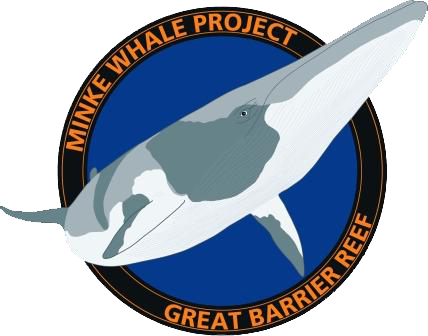Vocalisations
Minke whales, like all baleen whales, lack the system of air sacs and sound-generating ‘phonic lips’ in the forehead region above the skull, that are found in toothed whales, such as dolphins. In minke whales, the sounds probably come from the larynx, although none of the baleen whales have vocal cords.
Dwarf minke whales produce sounds between 50–9400 Hz, which are within human hearing range of 18 Hz–20,000 Hz. The most characteristic sound made by the whales is a mechanical sounding call that has three rapid pulses and a longer trailing note. They also produce a series of pig-like grunts, moans and belches.
When whales vocalise near swimmers, sounds such as these can be heard easily underwater, and if they occur in very close proximity, vibrations from the sound waves can sometimes be felt in one’s chest.
There is no evidence that any of the minke whales can produce very high frequency signals that dolphins make and use for fine-scale echolocation. The lower frequency sounds made by dwarf minke whales however might help them locate large structures e.g. reefs. Intense, low frequency sounds can travel long distances in water and may help whales stay in contact even when they are far out of visual range.
Acoustic research on dwarf minke whales
Studies done by Dr Jason Gedamke and others (Gedamke et al., 2001; Gedamke 2004) investigated whether the dwarf minke whale is the source of an unusual, complex, and stereotyped sound that had previously been recorded in Australian waters, which he dubbed the “star-wars” vocalization. Using a hydrophone array, towed from a vessel to record sounds from circling whales, they were able to pinpoint the sound source, confirming that the whales do produce this unusual sound. Gedamke observed that the repetitive “star-wars” vocalization has characteristics consistent with reproductive advertisement displays in other whale species (e.g. humpbacks) and he hypothesised that this sound is produced exclusively by male whales.
References
Gedamke, J., Costa, D.P. & Dunstan, A. (2001). Localization and visual verification of a complex minke whale vocalization. J. Acoust. Soc. Am. 109 (6): 3038-3047.
Gedamke, J. (2004). Minke whale song, spacing, and acoustic communication on the Great Barrier Reef, Australia. PhD thesis, University of California, Santa Cruz.
